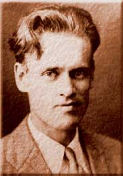
 |
"While the
great minds of science, financed by the biggest companies in the world, wrestled with 19th
century answers to a 20th century problem, Philo T. Farnsworth, age 13, dreamed of
trapping light in an empty jar and transmitting it, one line at a time, on a magnetically deflected beam of
electrons." |
1875, Boston, USA. George Carey proposed a system based on the exploration of every point in the image simultaneously: a large number of photoelectric cells are arranged on a panel, facing the image, and wired to a panel carrying the same number of bulbs.
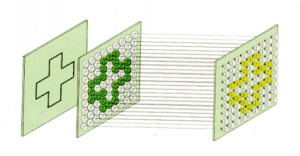
George Carey's idea
1881,
Constantin Senlecq published a sketch detailing a similar idea in an improved
form: two rotating switches
were proposed between the panels of cells and lamps, and as these turned at the same rate
they connected each cell, in turn, with the corresponding lamp. With this system, all the
points in the picture could be sent one after the other along a single wire.
1884, The German Paul Nipkow applied for a patent covering another image scanning system: it was to use a rotating disk witha series of holes arranged in a spiral, each spaced from the next by the width of the image; a beam of light shining through the holes would illuminate each line of the image.
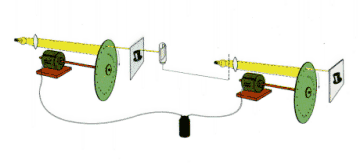
Nipkow's System
1923, Vladimir Zworykin invented the "lconoscope". This was a globe-shaped cathode-ray tube and it contained the first photoelectric mosaic made from metal particles applied to both sides of a sheet of mica.
1925,
an electrical engineer from Scotland, John Logie Baird, exhibited in
Selfridges department store in London a
machine with which he reproduced a simple image, in fact white letters on a black
background, at a distance. It was not really television because the two discs which served
to transmit the image and to reproduce it, were mounted on the same shaft. However Baird
did effectively demonstrate that the principle of successive scanning could be applied in
practice. He did it again in 1926, in his laboratory, with the first transmission of a
real scene the head of a person. The picture was scanned in 30 lines, with 5 full pictures
every second.
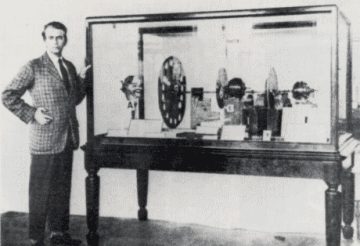
John Logie Baird and his television apparatus in 1926
1929, Zworykin presented the first prototype iconoscope at a meeting of engineers in New York in. The apparatus was built byRCA in 1933. It scanned the image in 120 lines, at 24 frames/second.
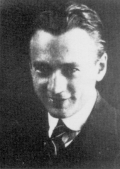
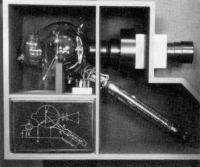
Vladimir Zworykin (1889-1982) The first iconoscope
1935, in March a television service was started in Berlin (180 lines/frame, 25 frames/second). Pictures were produced on film and then scanned using a rotating disk. Electronic cameras were developed in 1936, in time for the Berlin Olympic Games. November 1935. Television broadcasting began in Paris, again using a mechanical system for picture analysis (180 lines/frame, 25 frames/second).
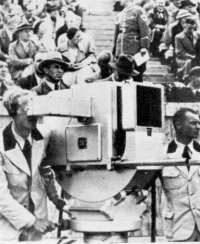
An "iconoscope" camera, Berlin Olympics, 1936